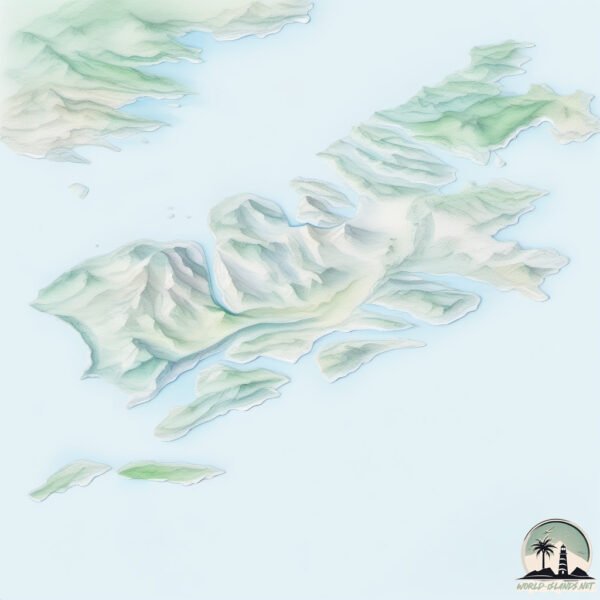Kodiak is a Very Large Island spanning 9395 km² with a coastline of 2989 km.
Topography and nature of Kodiak
Timezone: UTC-09:00Timezone places: America/AnchorageMax. Elevation: 1234 m Mean Elevation: 322 mVegetation: Herbaceous CoverTree Coverage: 23%
The mean elevation is 322 m. The highest elevation on the island reaches approximately 1234 meters above sea level. The island is characterized by Mountains: High, steeply elevated landforms. Characterized by both a high maximum elevation (over 500 meters) and a high mean elevation, creating rugged, mountainous terrains on islands.
Dominating Vegetation: Herbaceous Cover
Vegetation: 15 vegetation zones – Exceptionally Diverse Island
Infrastructure and Travelling to Kodiak
Does the island have a public airport? yes .
Does the island have a major port? yes .
The mean population of Kodiak is 0 per km². Kodiak is Uninhabited. The island belongs to United States of America .
The name of the island resonates across different cultures and languages. Here is how it is known around the world: Arabic: جزيرة كودياك; German: Kodiak-Insel; Spanish: Isla Kodiak; French: Île Kodiak; Portuguese: Ilha Kodiak; Russian: Кадьяк; Chinese: 科迪亚克岛
Continuing your journey, Amook is the next notable island, situated merely km away.
Beautiful Kodiak Island Alaska | Eat, Shop, and Explore the Island w/ Us
Experience Kodiak Island, Alaska with me, my newborn daughter, and my parents. Come along as we fly from Anchorage to ...
Beautiful Kodiak Island Alaska | Eat, Shop, and Explore the Island w/ Us
Experience Kodiak Island, Alaska with me, my newborn daughter, and my ...
Experience Kodiak Island, Alaska with me, my newborn daughter, and my parents. Come along as we fly from Anchorage to ...
Mountain Men: Mike Is Not Alone on Kodiak Island (Season 7, Episode 8) | History
While Mike is out hunting for Kodiak Brown Bears, at one point he ...
While Mike is out hunting for Kodiak Brown Bears, at one point he wanders into one of his lesser-used cabins and finds signs of a ...
Why are Kodiak Bears So Massive?
Why are Kodiak Bears So Massive? The Kodiak bear is a subspecies of ...
Why are Kodiak Bears So Massive? The Kodiak bear is a subspecies of grizzly bear native to the Kodiak Archipelago in ...
United States of America is classified as Developed region: G7: Group of Seven – Major advanced economies, including Canada, France, Germany, Italy, Japan, the United Kingdom, and the United States. The level of income is High income: OECD.
News – Latest Updates and Headlines from Kodiak
Stay informed with the most recent news and important headlines from Kodiak. Here’s a roundup of the latest developments.
Loading...
Social Media Posts about Kodiak
Loading...
Please note: The data used here has been primarily extracted from satellite readings. Deviations from exact values may occur, particularly regarding the height of elevations and population density. Land area and coastline measurements refer to average values at mean high tide.

